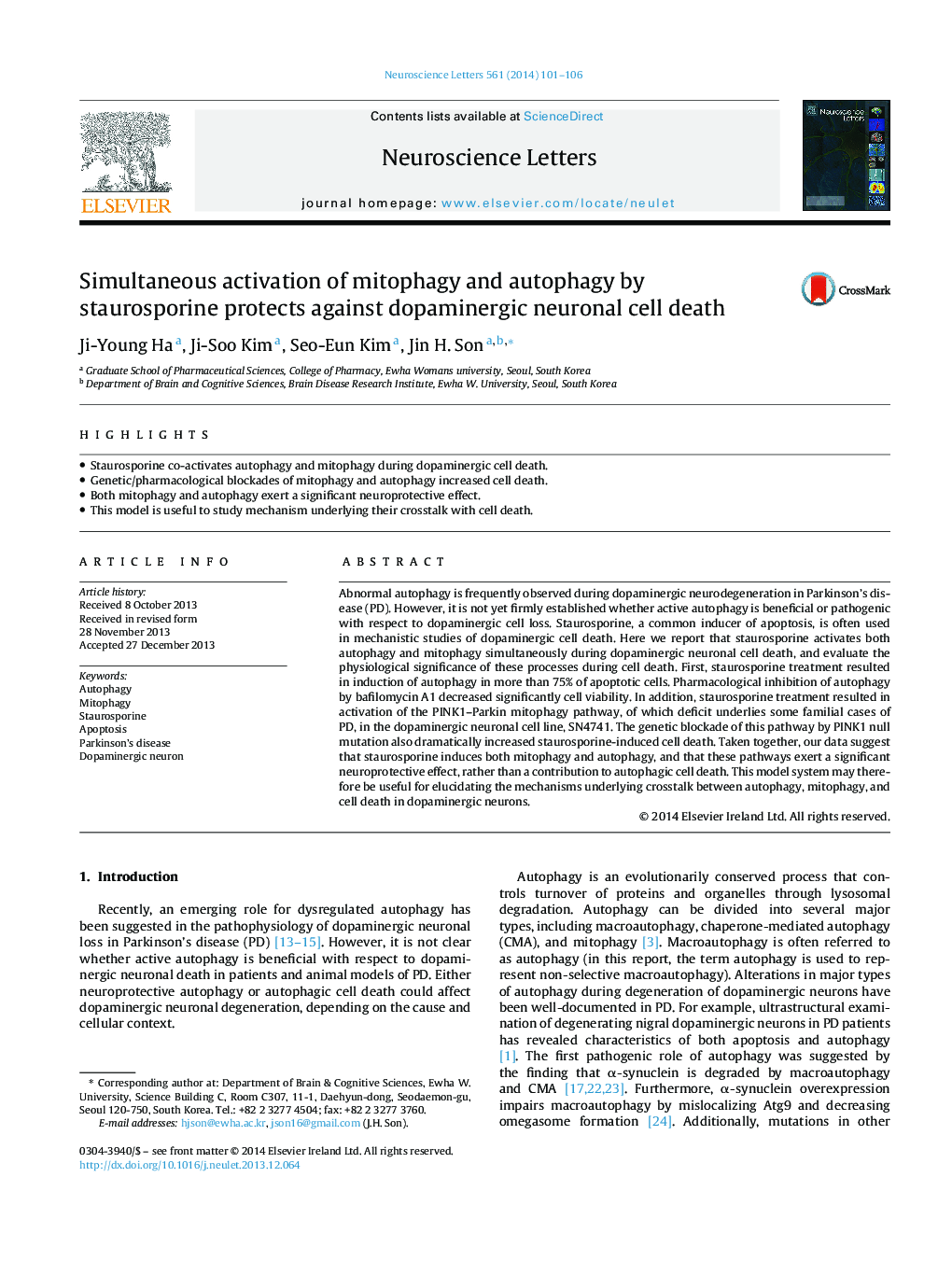| Article ID | Journal | Published Year | Pages | File Type |
|---|---|---|---|---|
| 4343856 | Neuroscience Letters | 2014 | 6 Pages |
•Staurosporine co-activates autophagy and mitophagy during dopaminergic cell death.•Genetic/pharmacological blockades of mitophagy and autophagy increased cell death.•Both mitophagy and autophagy exert a significant neuroprotective effect.•This model is useful to study mechanism underlying their crosstalk with cell death.
Abnormal autophagy is frequently observed during dopaminergic neurodegeneration in Parkinson's disease (PD). However, it is not yet firmly established whether active autophagy is beneficial or pathogenic with respect to dopaminergic cell loss. Staurosporine, a common inducer of apoptosis, is often used in mechanistic studies of dopaminergic cell death. Here we report that staurosporine activates both autophagy and mitophagy simultaneously during dopaminergic neuronal cell death, and evaluate the physiological significance of these processes during cell death. First, staurosporine treatment resulted in induction of autophagy in more than 75% of apoptotic cells. Pharmacological inhibition of autophagy by bafilomycin A1 decreased significantly cell viability. In addition, staurosporine treatment resulted in activation of the PINK1–Parkin mitophagy pathway, of which deficit underlies some familial cases of PD, in the dopaminergic neuronal cell line, SN4741. The genetic blockade of this pathway by PINK1 null mutation also dramatically increased staurosporine-induced cell death. Taken together, our data suggest that staurosporine induces both mitophagy and autophagy, and that these pathways exert a significant neuroprotective effect, rather than a contribution to autophagic cell death. This model system may therefore be useful for elucidating the mechanisms underlying crosstalk between autophagy, mitophagy, and cell death in dopaminergic neurons.
